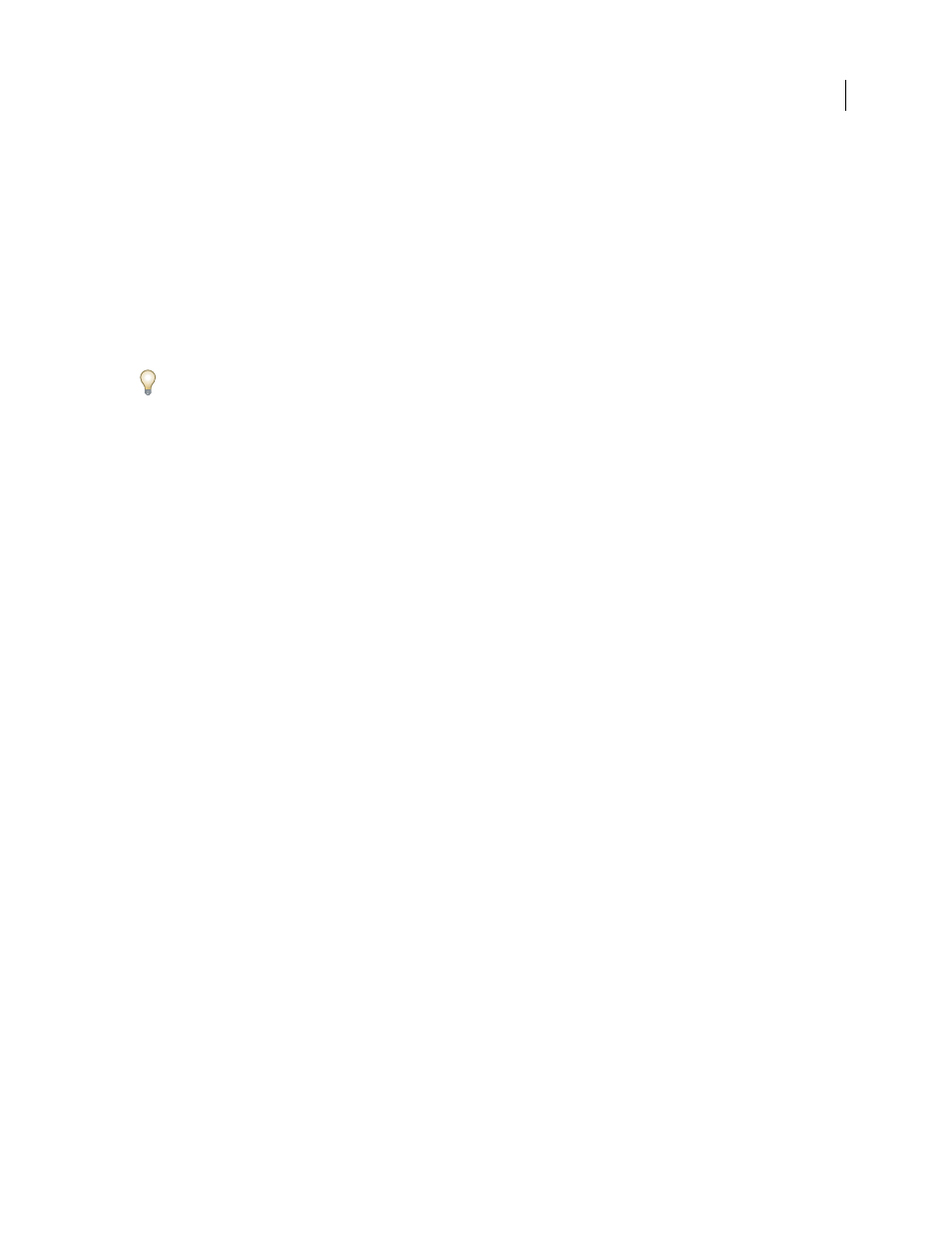Convert a smart object to a layer, About smart filters, Apply a smart filter – Adobe Photoshop CS3 User Manual
Page 319

PHOTOSHOP CS3
User Guide
312
2
Choose a location for the contents of the Smart Object, then click Save.
Photoshop exports the Smart Object in its original placed format (JPEG, AI, TIF, PDF, or other formats). If the Smart
Object was created from layers, it is exported in PSB format.
Convert a Smart Object to a layer
Converting a Smart Object to a regular layer rasterizes the content at the current size. Convert a Smart Object to a
regular layer only if you no longer need to edit the Smart Object data. Transforms, warps, and filters applied to a
Smart Object are no longer editable after the Smart Object is rasterized.
❖
Select the Smart Object, and choose Layer > Rasterize > Smart Object.
If you want to re-create the Smart Object, reselect its original layers and start from scratch. The new Smart Object
won’t retain transforms you applied to the original Smart Object.
About Smart Filters
Any filter applied to a Smart Object is a Smart Filter. Smart Filters appear in the Layers palette below the Smart
Object layer to which they are applied. Because you can adjust, remove, or hide Smart Filters, they are nonde-
structive.
You can apply any Photoshop filter—except for Extract, Liquify, Pattern Maker, and Vanishing Point—as a Smart
Filter. In addition, you can apply the Shadow/Highlight and Variations adjustments as Smart Filters.
To work with Smart Filters, select a Smart Object layer, choose a filter, and then set filter options. After you apply a
Smart Filter, you can adjust, reorder, or delete it.
To expand or collapse the view of Smart Filters, click the triangle next to the Smart Filter icon, displayed to the right
of the Smart Object layer in the Layers palette. (This technique also shows or hides Layer Styles.) Or, choose Layers
Palette Options from the Layers palette menu, then select Expand New Effects in the dialog box.
Use filter masks to selectively mask Smart Filter effects. See “Mask Smart Filters” on page 314.
Note: If you open a file containing a Smart Object layer with a Smart Filter in Photoshop, Photoshop retains the Smart
Filter effects when you open it, including filter masks. However, if you subsequently edit the Smart Object layer,
Photoshop won’t display the layer’s Smart Filters. You cannot edit filter masks in Photoshop.
For a video on smart filters, see
Apply a Smart Filter
1
Do one of the following:
•
To apply a Smart Filter to an entire Smart Object layer, select the layer in the Layers palette.
•
To constrain the effects of the Smart Filter to a selected area of a Smart Object layer, make a selection.
•
To apply a Smart Filter to a regular layer, select the layer, and choose Filter > Convert For Smart Filters, and click OK.
2
Do one of the following:
•
Choose a filter from the Filter menu. You can choose any filter, including third-party filters that support Smart
Filters, except Extract, Liquify, Pattern Maker, and Vanishing Point.
•
Choose Image > Adjustments > Shadow/Highlight or Image > Adjustments > Variations.
